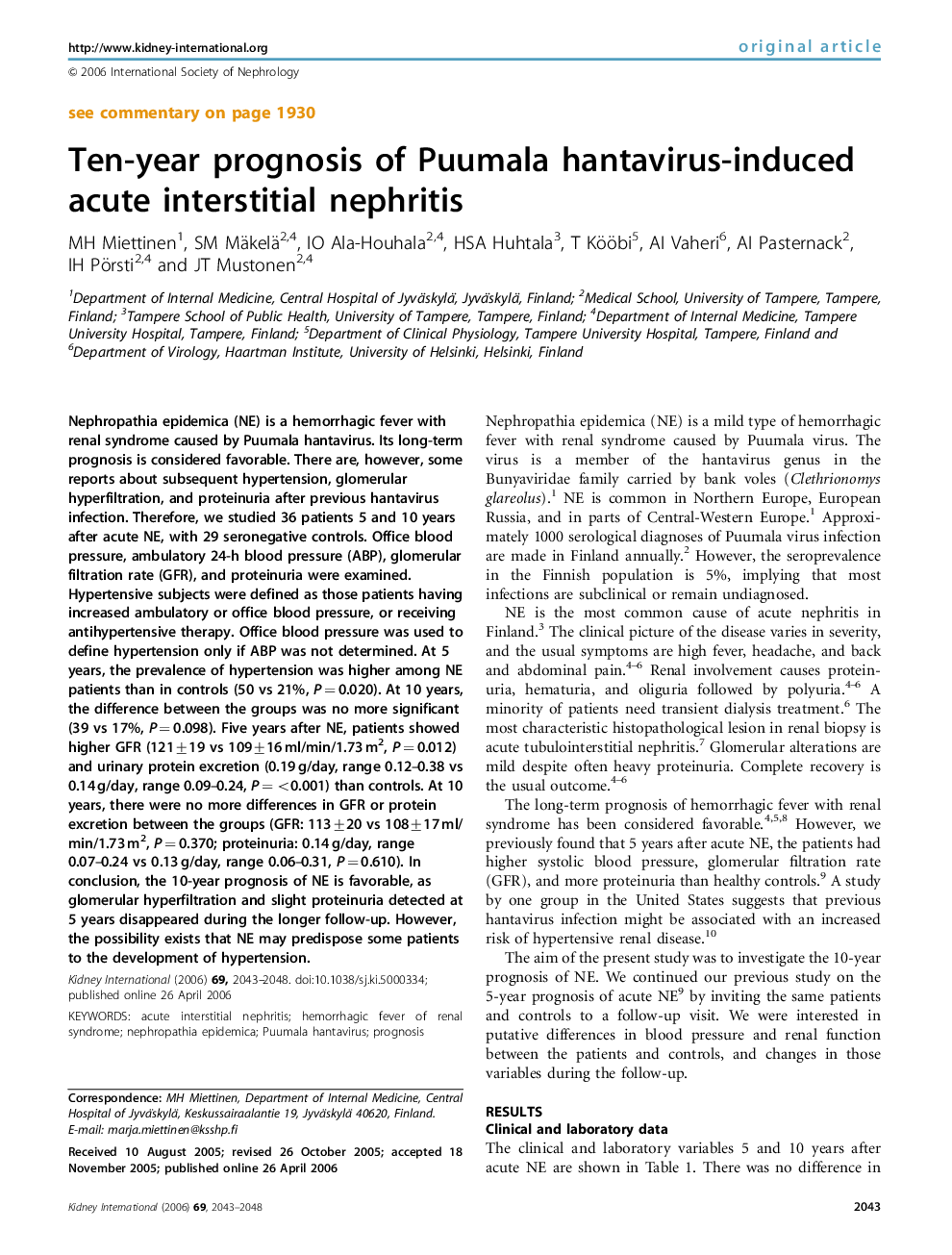| Article ID | Journal | Published Year | Pages | File Type |
|---|---|---|---|---|
| 3890078 | Kidney International | 2006 | 6 Pages |
Nephropathia epidemica (NE) is a hemorrhagic fever with renal syndrome caused by Puumala hantavirus. Its long-term prognosis is considered favorable. There are, however, some reports about subsequent hypertension, glomerular hyperfiltration, and proteinuria after previous hantavirus infection. Therefore, we studied 36 patients 5 and 10 years after acute NE, with 29 seronegative controls. Office blood pressure, ambulatory 24-h blood pressure (ABP), glomerular filtration rate (GFR), and proteinuria were examined. Hypertensive subjects were defined as those patients having increased ambulatory or office blood pressure, or receiving antihypertensive therapy. Office blood pressure was used to define hypertension only if ABP was not determined. At 5 years, the prevalence of hypertension was higher among NE patients than in controls (50 vs 21%, P=0.020). At 10 years, the difference between the groups was no more significant (39 vs 17%, P=0.098). Five years after NE, patients showed higher GFR (121±19 vs 109±16 ml/min/1.73 m2, P=0.012) and urinary protein excretion (0.19 g/day, range 0.12–0.38 vs 0.14 g/day, range 0.09–0.24, P=<0.001) than controls. At 10 years, there were no more differences in GFR or protein excretion between the groups (GFR: 113±20 vs 108±17 ml/min/1.73 m2, P=0.370; proteinuria: 0.14 g/day, range 0.07–0.24 vs 0.13 g/day, range 0.06–0.31, P=0.610). In conclusion, the 10-year prognosis of NE is favorable, as glomerular hyperfiltration and slight proteinuria detected at 5 years disappeared during the longer follow-up. However, the possibility exists that NE may predispose some patients to the development of hypertension.
